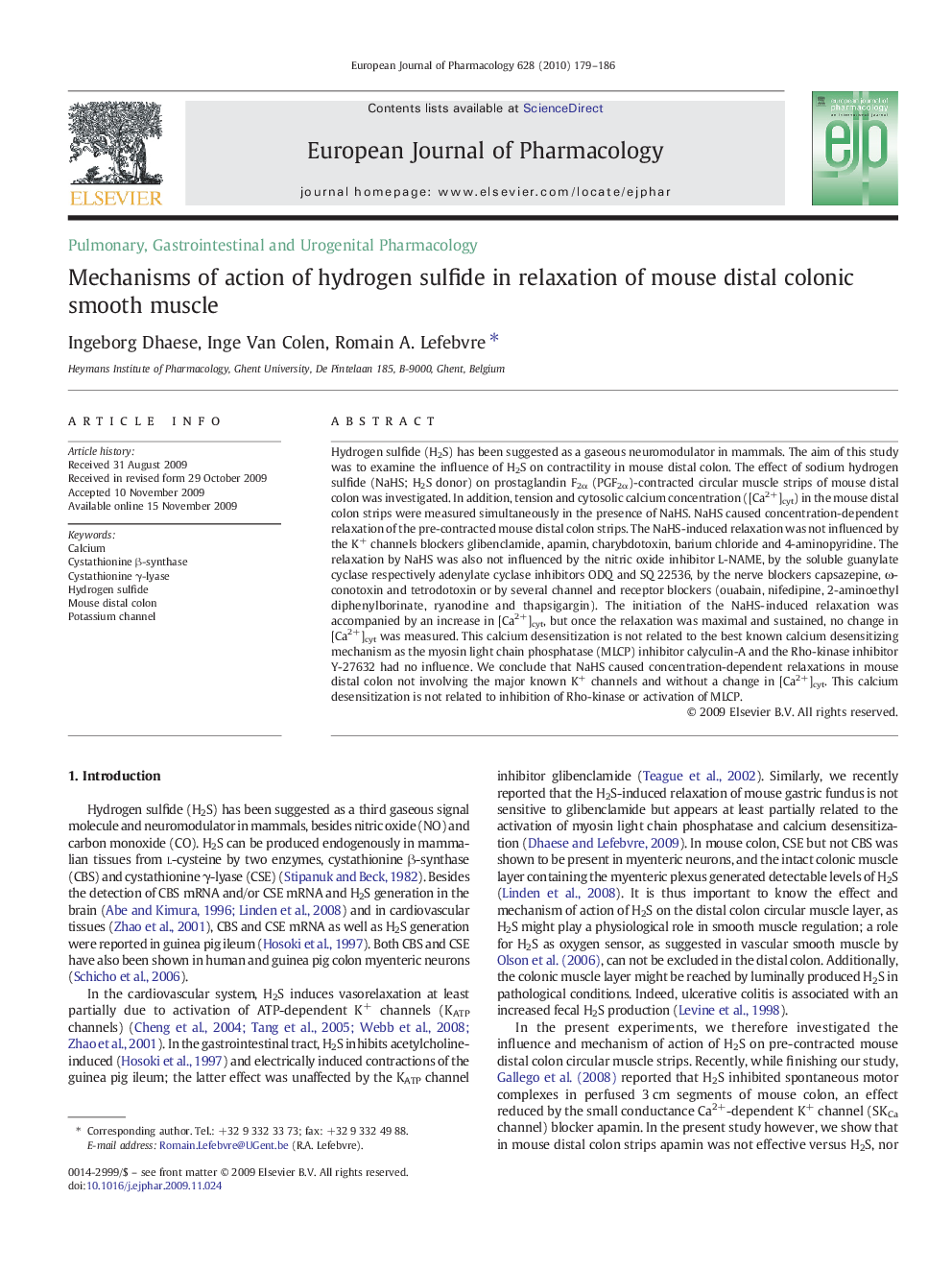| Article ID | Journal | Published Year | Pages | File Type |
|---|---|---|---|---|
| 2533820 | European Journal of Pharmacology | 2010 | 8 Pages |
Hydrogen sulfide (H2S) has been suggested as a gaseous neuromodulator in mammals. The aim of this study was to examine the influence of H2S on contractility in mouse distal colon. The effect of sodium hydrogen sulfide (NaHS; H2S donor) on prostaglandin F2α (PGF2α)-contracted circular muscle strips of mouse distal colon was investigated. In addition, tension and cytosolic calcium concentration ([Ca2+]cyt) in the mouse distal colon strips were measured simultaneously in the presence of NaHS. NaHS caused concentration-dependent relaxation of the pre-contracted mouse distal colon strips. The NaHS-induced relaxation was not influenced by the K+ channels blockers glibenclamide, apamin, charybdotoxin, barium chloride and 4-aminopyridine. The relaxation by NaHS was also not influenced by the nitric oxide inhibitor L-NAME, by the soluble guanylate cyclase respectively adenylate cyclase inhibitors ODQ and SQ 22536, by the nerve blockers capsazepine, ω-conotoxin and tetrodotoxin or by several channel and receptor blockers (ouabain, nifedipine, 2-aminoethyl diphenylborinate, ryanodine and thapsigargin). The initiation of the NaHS-induced relaxation was accompanied by an increase in [Ca2+]cyt, but once the relaxation was maximal and sustained, no change in [Ca2+]cyt was measured. This calcium desensitization is not related to the best known calcium desensitizing mechanism as the myosin light chain phosphatase (MLCP) inhibitor calyculin-A and the Rho-kinase inhibitor Y-27632 had no influence. We conclude that NaHS caused concentration-dependent relaxations in mouse distal colon not involving the major known K+ channels and without a change in [Ca2+]cyt. This calcium desensitization is not related to inhibition of Rho-kinase or activation of MLCP.
